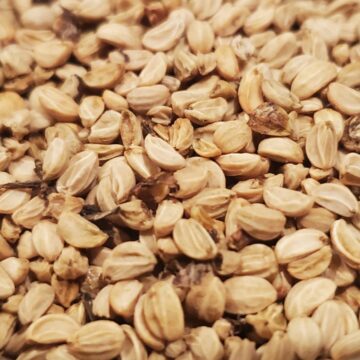Description
Coffea Catura is native to Brazil. Despite that it stays much shorter than other coffee species, it is an abundant producer of beans. The coffee from catura beans is of the highest quality. It can also be happily grown in direct sun, whereas other coffee species prefer a bit of shading. It grows best at high altitudes but will adapt to almost any environment. Soils should contain adequate supplies of nitrogen, calcium and magnesium, and plants should be fertilized regularly. Catura, like other coffee varieties, makes a great houseplant with thick, dark green, glossy foliage. We have growing instructions below, but we do recommend you follow our guide here
Growing Information: It is often a good idea to soak your seeds in water for a day or two before planting. Sow your seeds about one inch below the surface of soil and keep it lightly moist. Too much moisture will cause the seeds to rot. Potting soil with some perlite added in for drainage will or it can be mixed with sand and compost. Germination can take a while, so you may choose to cover your planted seeds with clear plastic to keep in moisture. Otherwise, you will have to mist the soil when it is at risk of drying out completely. Another option is sow your seeds in a sealable container or sandwich bag filled with either moist sand or the same soil mixture you will use to grow your plants. The advantage of using sand is that it is less likely to cause rot, but if your moisture level is correct that shouldn’t be a big concern. Check periodically to see when your seeds have sprouted. When you see a root popping out from the seed coat, plant the seed level with the soil in its own container with root facing down. The advantages of this method is that it saves space while the seeds are waiting to germinate and it allows you to position the seed in the exact direction it should be growing. Be sure that the seed is not packed too tightly so that it can rise easily out of the soil as it grows. The seedling is still at risk of rotting until the seed coat is off, so be sure not to over water. The seed has is a papery outer layer and a hard shell underneath, which you may need to gently assist with the removal of if it is not coming off. In warm climates, plants can be safely transplanted outdoors in a semi-shaded location after they are about 18″. Indoors, simply keep it near your window (preferably south, east or west). Feed the plants every two weeks from spring through fall and once a month during the winter with a 10-10-10 fertilizer. Allow the soil to dry out between waterings. Ideal humidity is around 50%, but is not essential.
In purchasing, international buyers agree to assume the risk of arrival of all items. We cannot replace lost or seized items. You will be required to confirm that you agree to these terms before items can be sent.










